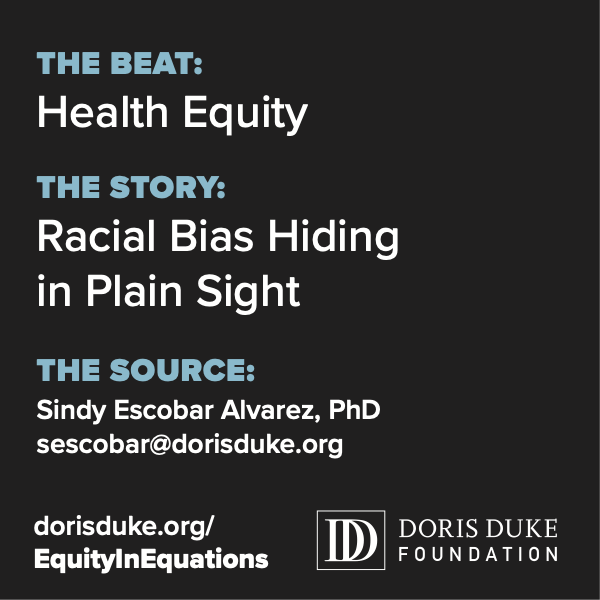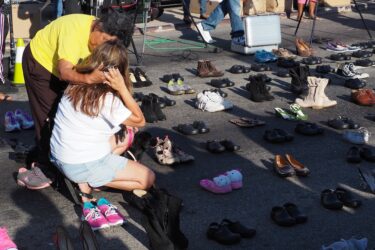In 2020, the Kansas City Star saw a need for deeper reporting on gun violence beyond the usual breaking news coverage of homicides and injuries. Out of that need came The Missouri Gun Violence Project, a two-year reporting project aimed to dig into the causes, consequences and potential solutions of Missouri’s firearm violence epidemic.
The project was supported by the Missouri Foundation for Health and Report for America. With a reporting team that included Humera Lodhi and Hurubie Meko, we were placed at the Star to work on the project as a part of the Report for America program. When we started, we thought we understood how much of a crisis gun violence is. Two years of reporting later, we proved ourselves wrong and realized how far behind news organizations are on accurately and constructively covering the problem.
We weren’t alone at the Star in trying to reset the “default” approach to covering firearm violence. Reporters at outlets scattered across the country are pushing hard to cover this problem from the perspective of the communities hardest hit by it. Like me, these journalists have encountered pushback, a glaring lack of understanding and compassion about the crisis, and politics.
An AHCJ webinar at 12 p.m. CST/1 p.m. ET on Nov. 6 will explore this challenge, highlighting the experiences of four journalists, including me, who have moved the needle. They are:
- Sammy Caiola is a freelance reporter based in Philadelphia. Caiola was a gun violence prevention reporter for WHYY.
- Abené Clayton is a reporter for The Guardian based in Los Angeles. Clayton works on the Guardian’s Guns and Lies in America project.
- Chris Norris is a strategic advisor for Storycorps and is based in Philadelphia. Norris was managing editor for community and engagement at WHYY and worked with Caiola on her beat.
Firearm violence across the U.S. isn’t so much a violent crime problem; rather, it’s a public health and policy crisis that developed from years of disinvestment, weak firearm regulations and a disregard for worsening mental health.
One of the ways we reached that understanding was with how we defined firearm violence. Any conflict, injury or fatality involving a firearm is gun violence. That includes homicides, accidental shootings, police shootings, domestic violence and suicides.
The reasons behind those acts are never simple and cannot be boiled down to one culprit. But community members and experts told us that people often reach for a gun out of hopelessness and despair. Those feelings can lead to someone dying either by suicide or by homicide.
The stories we told
Our work told the stories of women who survived gun violence in their home, parents who lost a child to suicide, and many Missourians who have seen their neighborhoods devastated by near-constant shootings.
We published a six-part series showing how social determinants of health — people’s surrounding environment and the resources available to them — can drive firearm violence.
We examined how distrust between Black Kansas Citians and police has driven firearm violence in certain communities, how the accessibility of guns in Missouri has led to high rates of firearm suicides — particularly in rural communities — and how rolling back state gun laws impacted overall firearm deaths statewide. We explored violence prevention strategies and how cities were implementing them. We found that Black Missourians tend to face harsher penalties for gun-related offenses.
But we also met men and women working in their own communities to make a difference. by building houses for their neighbors, or farming, or making a better future for the kids in their town.
We hosted live virtual panels with experts, advocates and Missourians with first-hand experience following each of our stories. The discussions gave readers another way to engage with the stories, while also learning more about the ways in which gun violence can impact their communities.
That’s all to say — we learned a lot, did reporting we’re proud of, made mistakes and came away with a stronger understanding of the struggles to get a newsroom to change its approach to covering violence.
We were especially proud of the stories where we weaved together gun violence with other pressing issues in Missouri, such as policing, public health, domestic violence, suicide, etc. That reporting was strong because it showed how firearm violence can worsen other issues and vice versa.
What went right and what went wrong
There are things we got right in our approach and things we could have changed. What we did best was covering a wide array of issues that intersect with firearm violence. Even if it was just for one story. We tackled policing, domestic violence, violence prevention, public health, legislation, suicide, etc.
One thing we could have done differently, in a perfect world, is create subspecialties on the team. Each reporter would focus on a few aspects of gun violence and related issues. It would have also been a major asset if Humera’s original position as a dedicated data reporter would have been honored.
One of the biggest hurdles we faced was a lack of a cohesive vision throughout the project and specific objectives in the short and long term. We started with a reporting plan that we were able to stick with for some time, but content expectations repeatedly changed. We were also told that we would be built into the newsroom, and that never happened.
We also were told we’d have input on how the newsroom would change its reporting on firearm violence, that also never happened. This really illustrated how hard it is to shift a newsroom’s approach and policies around how it reports on a topic. We never expected overnight changes, but we did hope we could have input based on our expertise.
For the short term, our advice to newsrooms looking to change their approach to gun violence reporting is to really examine why you’re covering daily violence. What is the news value? Do you do it just because that’s the way things have always been done? Do you intend to cover the entirety of the case through conviction? If it’s unsolved, are you going to follow up? Then, find ways to add larger context to the violence. What other data about the area is relevant? What’s the poverty level, unemployment rate? Also, examine your sourcing. Are you talking to residents who regularly deal with violence? Are you attending community events in those areas to expand your sourcing? Do you heavily rely on the police’s narrative following a shooting?
For the long term, I realize it takes a lot of time to completely change a newsroom’s policy on something like this. But a good long-term goal is to game out how that change will happen.









